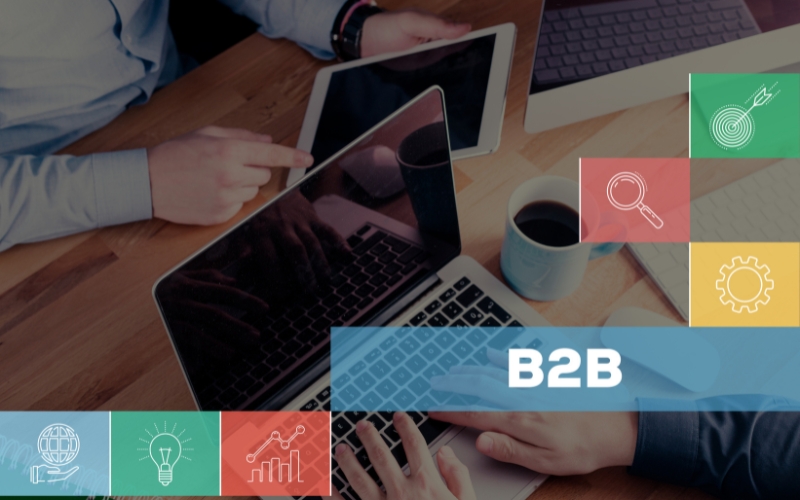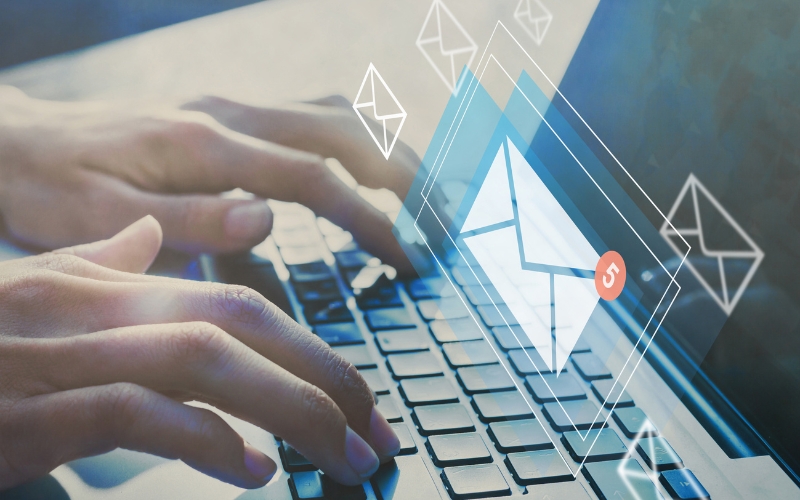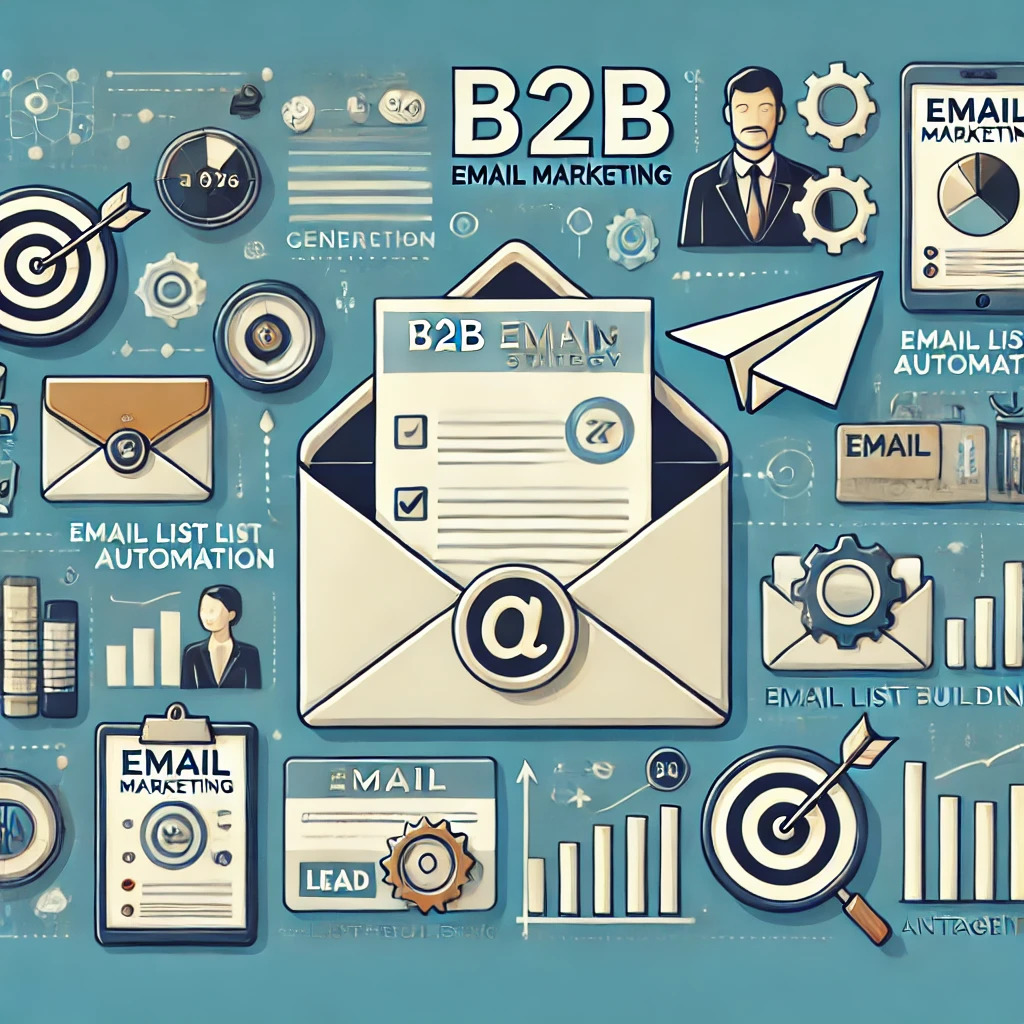Email marketing is a cornerstone of B2B Leads with Email Marketing, offering a direct and effective way to reach potential clients. However, creating a successful strategy for B2B Leads with Email Marketing involves more than just sending out messages to a list of contacts. It requires building a high-quality email list, crafting compelling campaigns that resonate with your target audience, and nurturing leads through well-timed automated sequences. In this article, we will explore the key elements of a successful strategy for B2B Leads with Email Marketing. From identifying your ideal prospects and segmenting your audience, to designing emails that drive conversions and automating your nurturing process, these strategies will help you maximize your lead generation efforts and boost your ROI.
Building a High-Quality Email List for B2B Lead Generation

Generating high-quality B2B Leads with Email Marketing starts with building a solid email list. Unlike B2C marketing, B2B Leads with Email Marketing requires a more targeted approach, focusing on decision-makers and key influencers within companies. In this section, we will explore strategies for identifying your target audience, gathering leads effectively, and maintaining a clean email list to ensure better deliverability and engagement.
Identifying and Segmenting Your Target Audience in the B2B Space
The first step in building a high-quality email list is identifying your target audience. For B2B Leads with Email Marketing, it’s crucial to focus on businesses that align with your product or service offering. Begin by analyzing your ideal customer profile (ICP), which includes factors such as industry, company size, revenue, location, and job titles. This will help you narrow down your list to the most relevant prospects.
Once you’ve identified your target audience, segment your list into smaller, more specific groups. For example, you can create segments based on the prospect’s role in the company (e.g., CEOs, marketing managers, IT directors) or their stage in the buying cycle (e.g., awareness, consideration, decision). Segmentation enables you to send tailored content that speaks directly to the needs and pain points of each group, improving the chances of engagement and conversions with B2B Leads with Email Marketing.
Best Practices for Gathering Leads Through Gated Content, Sign-Up Forms, and Landing Pages
Now that you know who your target audience is, the next step is to gather email leads. One effective method is offering gated content such as whitepapers, eBooks, webinars, or industry reports in exchange for contact information. Gated content provides value to your prospects while also capturing their details, allowing you to nurture them with B2B Leads with Email Marketing.
In addition to gated content, make sure your sign-up forms and landing pages are optimized for conversion. Ensure that the forms are simple, asking for only essential information (name, company, email, and job title). The more straightforward the process, the higher the likelihood of conversion. Also, use compelling calls-to-action (CTAs) on your landing pages, encouraging visitors to download content or join your email list. A/B testing your forms and landing pages can help identify which elements drive better results for B2B Leads with Email Marketing.
How to Clean and Maintain Your Email List for Better Deliverability and Engagement
Building a high-quality email list doesn’t stop at gathering leads—it also involves keeping the list clean and updated. Over time, your list may accumulate inactive or invalid email addresses, which can harm your deliverability rates and engagement metrics. To avoid this, regularly clean your list by removing duplicates, unsubscribes, and bounced emails, ensuring better outcomes with B2B Leads with Email Marketing.
Additionally, regularly re-engage inactive subscribers by sending them targeted campaigns that encourage interaction. If they don’t respond, it might be time to remove them from your list. Keeping your list healthy not only improves deliverability but also ensures that your messages reach the right people, boosting your overall performance with B2B Leads with Email Marketing.
By identifying the right audience, using effective methods to gather leads, and maintaining a clean email list, you can lay the foundation for a successful B2B Leads with Email Marketing strategy. These efforts will help you build a list of engaged prospects, ultimately driving higher conversions and revenue through B2B Leads with Email Marketing.
Crafting Compelling Email Campaigns that Convert

Email marketing remains one of the most effective ways to generate B2B leads. However, crafting campaigns that truly convert requires more than just sending out generic emails. It’s about creating content that resonates with your audience, addresses their pain points, and compels them to take action. In this section, we’ll explore the importance of personalized subject lines, value-driven email content, and the best practices for designing visually appealing and mobile-friendly email templates.
The Importance of Personalized Subject Lines and Content to Capture Attention
The first step in getting your email noticed is having a subject line that grabs attention. In B2B marketing, personalized subject lines are crucial because they make your emails stand out in a crowded inbox. A generic subject line like “Our Latest Offer” doesn’t provide much incentive for the recipient to open the email. Instead, personalize the subject line by addressing the recipient directly or referencing something specific to their company, such as “John, Here’s a Solution to Improve Your Marketing Efficiency.”
Personalization should extend beyond just the subject line. Tailoring the content of the email to the individual or company can significantly improve engagement. Use dynamic fields to include the recipient’s name, company name, or even mention a recent interaction or event that’s relevant to them. This level of personalization shows the recipient that the email is not a one-size-fits-all message but one that’s crafted specifically for their needs.
How to Write Value-Driven Emails that Address the Pain Points of Your B2B Prospects
Once you’ve captured your prospect’s attention with a personalized subject line, the next step is delivering value in the body of your email. In the B2B space, decision-makers are often overwhelmed with generic sales pitches. To truly stand out, focus on providing solutions to the pain points your audience faces.
Start by understanding your prospect’s challenges. Is it a lack of productivity? Are they struggling with marketing ROI or customer retention? Once you have a clear understanding of their problems, craft your email to address those pain points directly. For example, instead of saying, “We offer the best software,” say, “Our software can help you reduce operational costs by 30%.” This approach speaks directly to the benefits your prospect will experience, making the email more appealing.
Additionally, incorporate social proof and case studies that demonstrate how your product or service has successfully solved similar problems for other businesses. This builds trust and credibility, showing that you have a proven track record.
Best Practices for Designing Email Templates That Are Visually Appealing and Mobile-Friendly
The design of your email is just as important as the content. A visually appealing email with a clean layout and clear call-to-action (CTA) can greatly increase engagement. Your email template should be simple yet eye-catching, ensuring that key messages stand out without overwhelming the reader.
Use a well-organized layout that guides the reader’s eyes toward the most important information. Break up text with images, bullet points, or headers to make the email easier to scan. Also, ensure that your CTAs are prominent and clear, directing the reader toward the next step—whether that’s scheduling a call, downloading a resource, or making a purchase.
Since many B2B emails are read on mobile devices, it’s essential to make your email templates mobile-friendly. Ensure that your design is responsive, meaning it automatically adjusts to fit the screen size of any device. This includes having large, tappable buttons, concise text, and optimized images for mobile viewing.
In conclusion, crafting compelling email campaigns that convert involves personalizing your subject lines and content, addressing the pain points of your B2B prospects, and following best practices for design. By focusing on these elements, you can create emails that not only capture attention but also drive meaningful actions, ultimately leading to more successful lead generation.
Nurturing Leads Through Automated Email Sequences

Once you’ve captured B2B leads with email marketing, the next step is nurturing them through automated email sequences. Lead nurturing is a critical aspect of the sales funnel, as it helps guide prospects from initial interest to a decision-making stage. Automated email sequences, or drip campaigns, play a key role in this process, allowing businesses to stay connected with prospects at scale while providing the right information at the right time. In this section, we’ll explore how to create effective drip campaigns, the role of educational content in building trust, and how to optimize your strategy to maximize B2B leads with email marketing.
How to Create Effective Drip Campaigns That Guide Leads Through the Sales Funnel
Drip campaigns are a series of automated emails that are sent to leads over time based on specific triggers or actions. These emails guide B2B leads with email marketing through different stages of the funnel, helping to educate them, build trust, and move them closer to conversion. To create an effective drip campaign, it’s essential to first define your goal for each stage of the funnel.
At the top of the funnel, your emails should focus on awareness and providing valuable insights to your leads. Share educational content, industry reports, or blog posts that introduce them to the solutions your business offers. As B2B leads with email marketing move down the funnel, shift your focus to deeper engagement. Offer case studies, product demos, or webinars that demonstrate how your solution can address their specific needs. Finally, towards the bottom of the funnel, send targeted emails with clear calls to action (CTAs), such as “Schedule a Demo” or “Get a Free Trial,” to encourage conversion.
The key to nurturing B2B leads with email marketing is timing. Space out your emails in a way that keeps your brand top-of-mind without overwhelming your leads. Use email marketing tools to automate the process and trigger emails based on lead behavior, ensuring that your campaign remains relevant and personalized.
The Role of Educational Content, Case Studies, and Testimonials in Building Trust
One of the primary goals of nurturing B2B leads with email marketing is to build trust, and educational content plays a vital role in this. Providing value through helpful resources, such as blog posts, eBooks, or white papers, demonstrates your expertise and positions your business as a trusted advisor. Educational emails also give prospects a deeper understanding of how your product or service can help solve their problems.
Case studies and testimonials are powerful trust-building tools. As prospects move down the funnel, they want to see proof that your solution works. Sharing real-world examples of how your product has helped similar businesses can ease doubts and help prospects visualize the benefits of working with you. Including customer testimonials in your emails adds social proof, showing that other businesses have had positive experiences with your brand.
Optimizing Your Email Automation Strategy to Stay Top-of-Mind Without Overwhelming Prospects
While automating emails to manage B2B leads with email marketing helps you stay in touch, it’s important not to overwhelm them with too many messages. The goal is to remain top-of-mind while providing value at the right time. One way to optimize your email automation strategy is by segmenting your email list based on where leads are in the buying journey. This allows you to send more personalized and relevant content that aligns with their current needs.
Another crucial aspect is monitoring engagement and adjusting your email sequences accordingly. If a lead clicks on a particular product or downloads a resource, use that information to trigger follow-up emails with more targeted content, such as product demos or special offers. Conversely, if a lead has shown little engagement, consider sending re-engagement emails with updated content or exclusive offers to reignite their interest.
Conclusion
In conclusion, generating B2B leads with email marketing is a multi-faceted process that requires careful planning and execution. By building a high-quality email list, crafting personalized and compelling email campaigns, and using automated sequences to nurture B2B leads with email marketing, businesses can significantly increase their chances of conversion. Each of these steps plays a vital role in engaging with prospects, building trust, and moving them through the sales funnel. When executed correctly, B2B leads with email marketing can drive business growth and foster long-term relationships with clients. By following these best practices, you can ensure that your strategy delivers lasting results.

